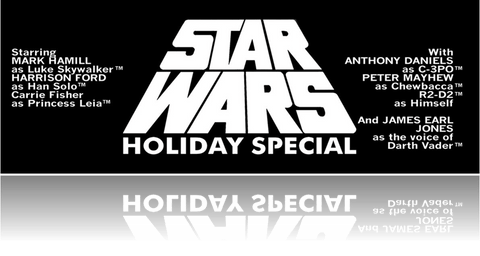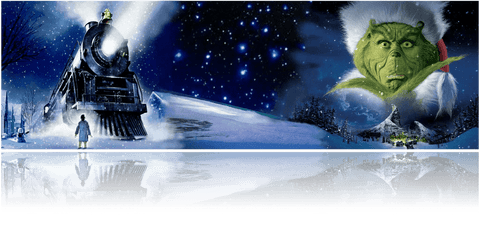
As an expat, the most common question I get asked when people find out I’m from Britain is, “Do you come from London?” It’s almost as if nowhere else exists in the country and the city’s iconography has a powerful hold over people’s imaginations. You also see this in Hollywood movies which tend to check off the cliches; drink a shot every time you spot a black taxi cab, a red phone box, a beefeater walking past, or perhaps a Pearly King and Queen in the background of a big American movie shot in the capital.
As Britain’s biggest and most famous city, London has played host to hundreds of both homegrown and overseas movie productions. Let’s take a look at how it isn’t all just phone boxes and beefeaters on film…
Oliver Twist (1948)
After the success of Brief Encounter, David Lean turned his attention to adapting Charles Dickens, first with Great Expectations (1946) and then with a gloriously grimy take on Oliver Twist. After a dramatic wild and windy opening scene on the moors as Oliver’s mother desperately tries to reach a poor house while in labour, the plucky orphan is plunged into the cesspool of London’s Victorian workhouses, backstreets, and doss houses. There he falls under the influence of the king of the pickpockets Fagin (Alec Guinness) and the brutal Bill Sykes (Robert Newton).
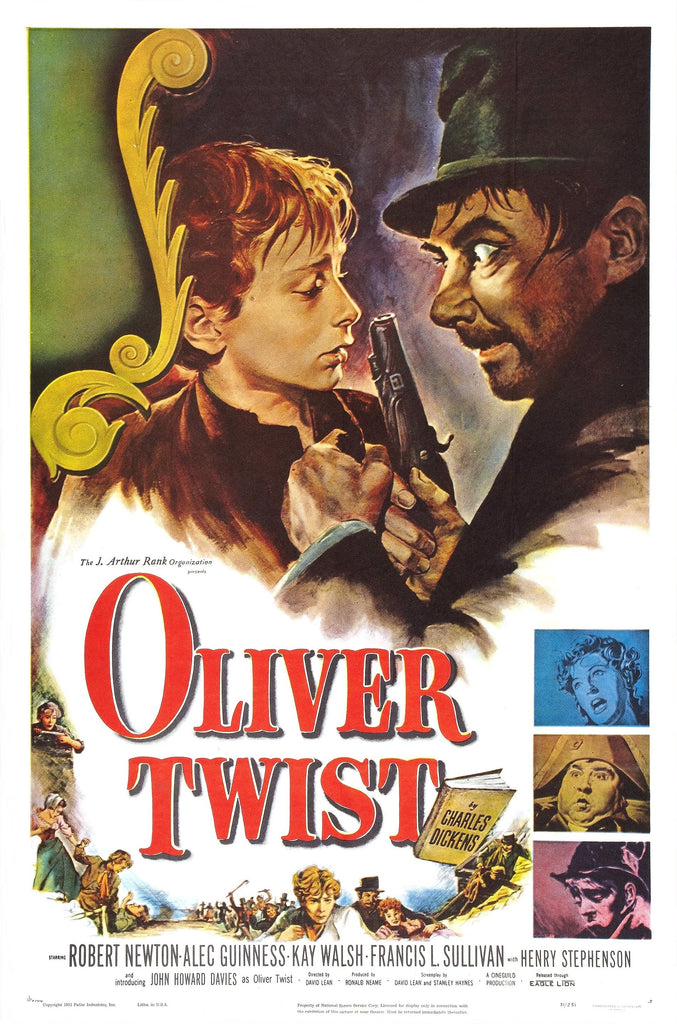
Lean’s film is one of the greatest Dickens adaptations and few movies have so atmospherically captured the grime and destitution of Victorian London. Much of this is down to Guy Green's expressionistic black-and-white photography, which gives the impression that the characters are living within a wood engraving from the mid 19th century.
Alec Guinness’s performance as Fagin drew criticism for anti-semitism at the time and it hasn’t aged any better over the past 75 years. Despite the problematic aspects, it is still a masterclass from the actor, making the character sinister and pathetic, charismatic and repellent, all at the same time. Better still is Robert Newton’s truly frightening performance as Sykes.
Night and the City (1950)
While there are numerous good examples of British film noir (Brighton Rock, The Third Man), it is still largely considered an American genre. An underseen gem is Night and the City, a dark underworld tale that makes the absolute most of its seedy London backdrop.

Richard Widmark plays Harry Fabian, a sleazy American chancer who will stop at nothing in the attempt to make a name for himself. Most of the action is in his face, a mask of sweaty futility as he ricochets from one double-cross to the next, desperately trying to keep track of the angles as his inevitable fate closes in on him. He’s one of noir’s great losers who, unlike many of the misguided or just plain horny men in the genre, can’t even point the finger at a femme fatale for his undoing - his problems all stem from his own crazed ambition.
Jules Dassin’s film is one of the most ugly and nihilistic of the genre, which is saying something against some pretty stiff competition. It’s a testament to his skill as a storyteller and the strength of Widmark’s performance that Night and the City is so compulsively watchable. In the background, London looks a treat, cast as a paranoia-inducing labyrinth.
The Lavender Hill Mob (1951)
Ealing Studios made quite a few great films set in the capital, including The Ladykillers and Passport to Pimlico, but The Lavender Hill Mob is a real standout. Alec Guinness is at it again in a very different role from the grasping Fagin, earning his first Oscar nomination for his role as Henry Holland, a meek bank clerk who masterminds a daring gold bullion robbery.
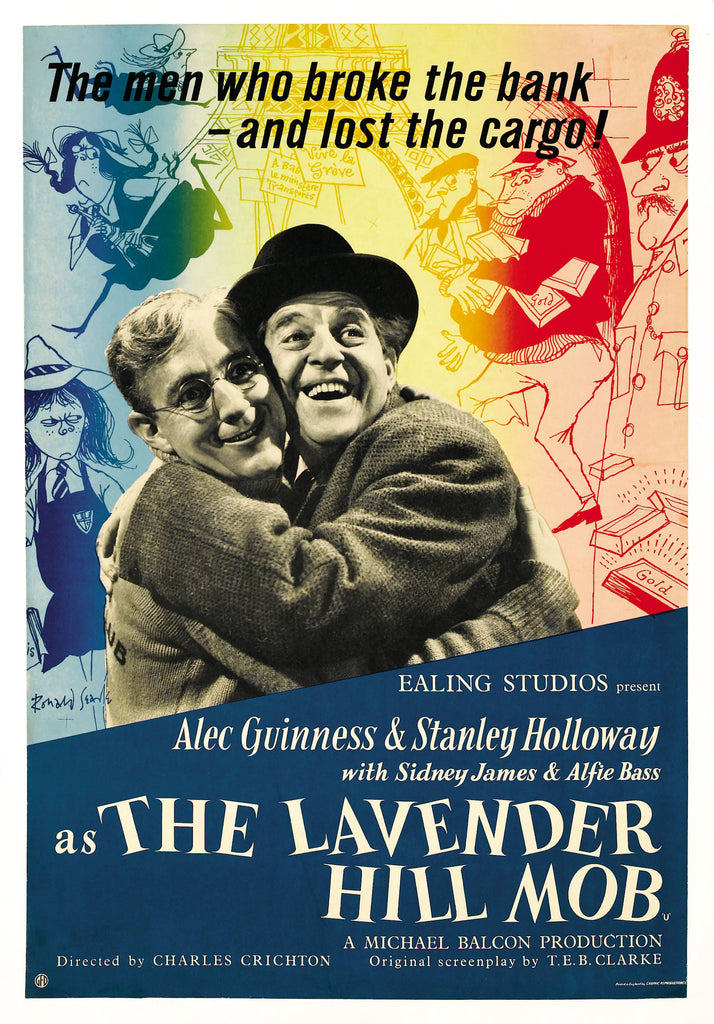
What follows is a quintessentially English heist movie as Holland teams up with Stanley Holloway, Sid James, and Alfie Bass to pull off the job and concoct an ingenious way of smuggling the booty out of the country to Paris. Needless to say it all goes wrong, culminating in a series of thrilling chase sequences as the boys scramble to recover incriminating evidence.
The backdrop is an interesting snapshot of postwar London, with thousands of workers trudging across the city’s bridges to their jobs in the city and evidence of the Blitz very much on display. With rationing still in play until 1954, the idea of escaping a dreary existence by pulling off a perfect and victimless robbery before high-tailing it to an exotic location must have seemed very appealing to many viewers. Audrey Hepburn makes an early screen appearance in the opening scene set in Rio de Janeiro.
Gorgo (1961)
New York City had King Kong and The Beast From 20,000 Fathoms; Tokyo had Godzilla; and London had… Gorgo. After a volcanic eruption off the coast of Ireland releases a huge angry monster, our foolish human protagonists capture it and ship it to the Big Smoke. Turns out it is only a baby, and mother Gorgo is not amused, resulting in a final reel full of city trashing fun.
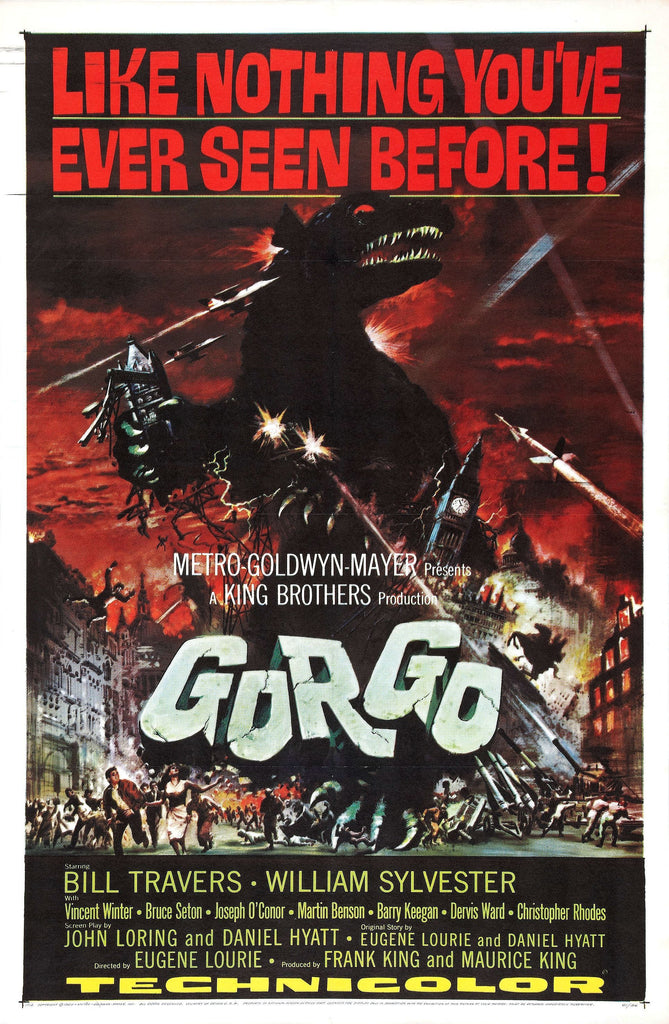
Gorgo is one of many B-movies that appeared on Mystery Science Theater 3000 and there is plenty to dunk on if that’s your bag, not least the very unconvincing rubber monster suits. It is very watchable, though, and there isn’t anything much more satisfying than watching your own capital city get stomped by a giant creature. Big Ben, Tower Bridge, and Piccadilly Circus all face the wrath of Gorgo’s mum, accompanied by stock footage of people running in panic.
Blow-Up (1966)
By the mid-60s, British cinema had left behind the “Grim Up North” miserabilism of the New Wave and fully embraced the revolution going on in London, which was all of a sudden the modish capital of the world. With the Swinging Sixties in full… er, swing, many film directors tried to capture the energy and glamour of the period. The big stars also followed; Michael Caine and Julie Christie became pinups of the Swinging London scene and even The Beatles, so proud of their Liverpudlian roots, headed to the city to shoot A Hard Day’s Night.
Films like Alfie, Darling, and Performance were all classics of the time, but it took an Italian director to fully capture the shallow attitudes of the era on celluloid. Michelangelo Antonioni, who had already chronicled the discontent of beautiful young people in his classic L’Avventura (The Adventure) in his home country, turned his attention to London in his sleek mystery Blow-Up.

David Hemmings is perfect as Thomas, a caddish fashion photographer who enjoys bedding the beautifully aloof subjects who flock to his hip Notting Hill studio with dreams of stardom. Thomas is cynically aloof, but he is forced to re-engage with the world when he thinks he has captured evidence of a murder on camera. Some may argue that the film is all style over substance, but what style. Mike Myers spoofed the photo shoot scenes to great effect in Austin Powers: International Man of Mystery.
Quatermass and the Pit (1967) and Death Line (1971)
The London underground plays an integral part in the lives of locals and tourists alike, transporting up to 5 million passengers a day. The extensive network of stations is a remarkable feat of engineering, but hustling through claustrophobic tunnels deep under the capital and crowding onto densely packed subway cars can be a bit of a nightmare. So it’s not surprising that two of the Tube’s finest cinematic moments are both horror movies.

Quatermass and the Pit expertly blends sci-fi and the supernatural as workers renovating the (fictional) Hobb’s End tube station unearth a mysterious metallic object. When the authorities determine that it isn’t a UXB, intrepid Professor Quatermass (Andrew Keir) arrives to conclude that the thing is a Martian spacecraft that has been buried since before the dawn of mankind. What is more, the dead insectoid occupants still have a powerful psychic hold over our monkey brains. The effects are two-bob but, thanks to Nigel Kneale’s robust and intelligent writing and committed performances, the film is spooky throughout before an apocalyptic finale.
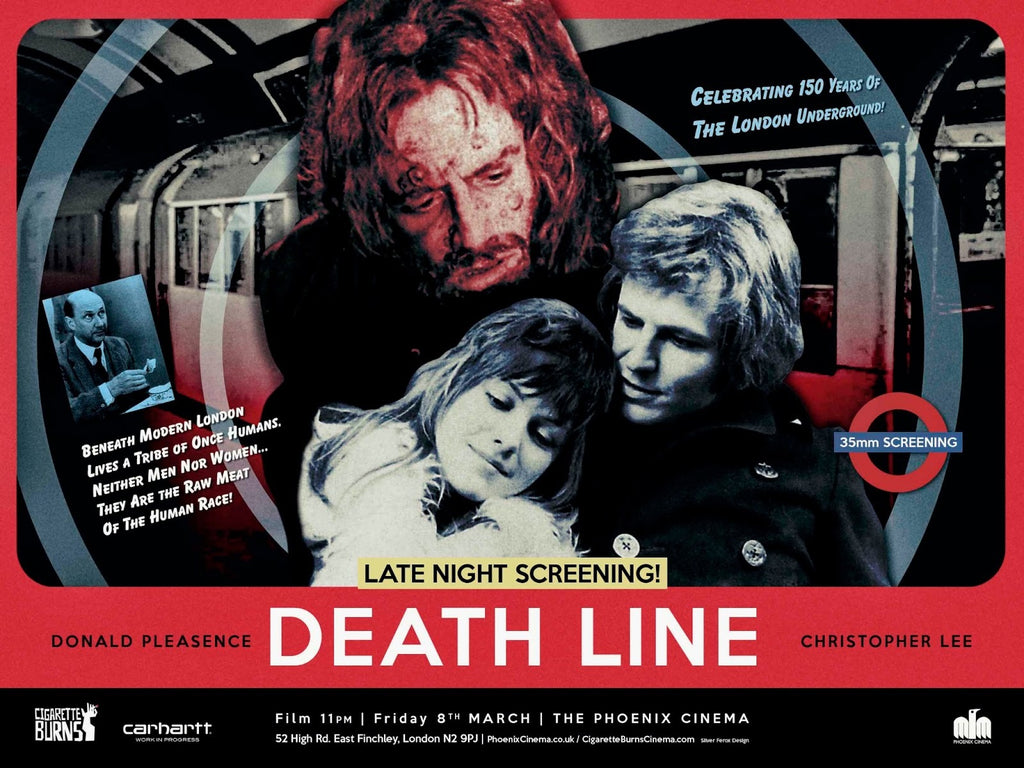
Death Line is more grounded in terrestrial fears but no less fantastical, focusing on a cannibal preying on lone commuters at night. Donald Pleasance is the tea-loving copper investigating the case and Christopher Lee has a small role as a shadowy MI5 man. Star of the show is Hugh Armstrong as the cannibal, the last in a line of descendents from miners trapped in a 19th-century cave-in while building the tunnels. He gets an amazing range of emotions from his single line of repeated dialogue. Death Line is reassuringly grubby in that particular ‘70s British way and is gruesome and surprisingly moving in equal measure. You will also never hear a “mind the doors” announcement on the Tube in the same way again.
One of Our Dinosaurs is Missing (1975)
When someone says the words Disney and London, Mary Poppins is probably the movie that immediately springs to mind. Not on my list! Instead, I’m plumping for One of Our Dinosaurs is Missing, simply because I really loved it when I was a kid.

This goofy family-friendly caper isn’t regarded as one of Disney’s finest moments, particularly with Peter Ustinov and Bernard Bresslaw in yellowface. There must have been something in the air in the mid ‘70s; the following year, Peter Sellers was also doing it parodying Charlie Chan in Murder by Death.
Problematic stuff aside, Derek Nimmo, Helen Hayes, and Joan Sims are all charming, and what’s not to love about a comedy heist about stealing the famous Brontosaurus skeleton from the Natural History Museum?
The Long Good Friday (1980)
There is something almost poignant about the ambitions of East End gangster Harry Shand (Bob Hoskins) in The Long Good Friday these days. Released as Britain was going from the wheezing “sick man of Europe” of the ‘70s to the strident privatisation and deregulation of Thatcherism in the ‘80s, Shand is on the cusp of building a London dockland empire that will turn the city into the capital of the world.

He’s patriotic and proud that his country has entered the Common Market and boasts that his “corporation” is about to do business with a major German player, and his plan to turn the decrepit docklands into a hub of finance and commerce presaged the Canary Wharf development. Mirroring the Iron Lady’s backing of the “Yes” campaign to stay in the EEC in 1975, both Harry and the film place great importance on Britain’s relationship with Europe to build its clout on the world stage.
He’s on the verge of turning his business legitimate with the waterfront development, but to accomplish his goal he requires a special relationship with shadowy investors from across the pond. Just as it’s all looking cushty, Shand’s world comes crashing down as the IRA target him for revenge after one of his underlings whacks a few of their guys.
In a way, Shand is London in this movie, and Bob Hoskins never found a better stage for his Cockney accent. During one key monologue, the mobster is literally framed by Tower Bridge on the Thames, emphasising his relationship with the city.
As Shand desperately tries to figure out what is going on, he quickly reverts to the brutal tactics of his rise to power, leaning on local grasses and bent coppers and terrorising members of the underworld. Pacy, taut, and surprisingly funny, The Long Good Friday stands alongside Get Carter as two of the greatest British gangster movies.
My Beautiful Laundrette (1985)
As the British economy picked up again after the Second World War and the nation began rebuilding, immigration also increased to fill gaps in the labour market. Many came from the Indian subcontinent, changing the face of cities and also giving rise to a new national dish, the curry.
By the late ‘70s and early ‘80s many of the second generation were facing life on the dole and racism from the increasingly virulent National Front, two topics tackled in Stephen Frears’ My Beautiful Laundrette.

Gordon Warnecke plays Omar Ali, the impoverished and unemployed son of Hussein, an ailing and alcoholic Pakistani former writer (Roshan Seth). Hussein gets his boy a job with his unscrupulous uncle Nasser (Saeed Jaffrey), who is making a fine living in the cut-throat world of Thatcher’s Britain. Omar is a bit of a go-getter, and Nasser promotes him to managing a grotty laundrette in a run-down South London neighbourhood. To get the business on its feet, Omar enlists the help of Johnny (Daniel Day-Lewis), an old school friend who has since fallen in with a gang of right-wing thugs.
The Oscar-nominated screenplay by Hanif Kureishi is a little stagey and the performances are calibrated likewise, giving the film a heightened feel. The benefit of this tactic is that the drama avoids traditional kitchen-sink tropes and defies expectations at key points. Also throwing gay issues into the mix as Omar and Johnny embark on a secretive sexual relationship, the stage is set for a clash between cultures, traditions, and our protagonists and Johnny’s gang. Even this inevitable jolt of violence plays out differently than one might expect, with the film ending on a gorgeous note of love and mutual appreciation.
Made on a shoestring, My Beautiful Laundrette was an important statement on life in Thatcher's Britain and quietly revolutionary in its positive representation of a queer interracial relationship. It is a landmark film in cinema exploring the South Asian experience in Britain, which has since given rise to mainstream hits like East is East (1999) and Bend It Like Beckham (2002).
Withnail and I (1987)
If Blow-Up depicted the glamour of the Swinging Sixties, Bruce Robinson’s Withnail and I did exactly the opposite, dumping us in the company of two out-of-work actors as they drink and squabble in their dismal Camden Town flat at the arse-end of the ‘60s. Their environs are just as bleak as their job prospects, a run-down neighbourhood of greasy spoon cafes, derelict buildings, and grimy pubs. Their grand plan to borrow a rich relative’s cottage in the Lake District for a few days to “rejuvenate” is met with disaster; these boys just aren’t cut out for the country life.

Writer and director Bruce Robinson based the screenplay on his experiences as a young actor in the ‘60s and, despite its absurdist touches, the whole thing has a whiff of authenticity about it. Paul McGann and Richard E. Grant are both revelatory in roles that would see them become cult icons, and the film is stolen by Richard Griffiths as Uncle Monty, the portly eccentric who has eyes for McGann’s “I” character. His predatory behaviour was inspired by Robinson’s encounters with a famous Italian director who displayed unwanted amorous intentions towards him.
Lock, Stock, and Two Smoking Barrels (1998)
Coming at the tail-end of Cool Britannia, Guy Ritchie burst onto the scene with his cheeky and stylish fairytale set in a London underworld of old-fashioned boozers, strip joints, sex shops, and empty back streets. The lively caper intertwined several plot threads as competing parties all converge on a pair of antique shotguns after Eddy (Nick Moran) and his mates end up in the debt of a vicious East End mobster known as Hatchet Harry (P.H. Moriarty). Much comic confusion ensues.
Ritchie’s follow-up, Snatch, is a better film but Lock, Stock was the moment when his vision of a fantasy gangland leapt fully formed onto our screens. Everyone went wild for it, including Brad Pitt - that was how he ended up playing an incoherent “pikey” bare-knuckle boxer in Ritchie’s next film.
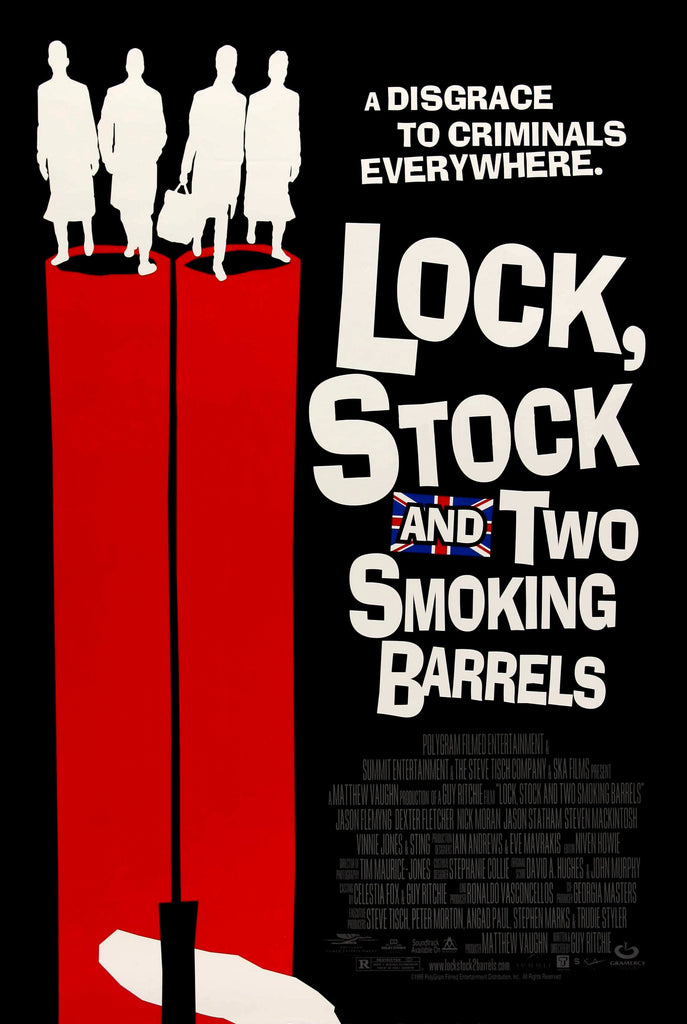
Ritchie also had fun with his casting, turning former Wimbledon F.C. hard nut Vinnie Jones into a film star and getting some great work out of Lenny “The Guv’nor” McLean as Barry the Baptist, Harry’s enforcer. The real-life East End villain brought a lot of authenticity to the part, presumably drawing from his colourful history which included hanging out with characters like the Kray Twins and Ronnie Biggs.
The Football Factory (2004), Green Street (2005) and Cass (2008)
Football is part of the fabric of society in Britain. Whenever I go back to visit I’m always surprised by how many social interactions revolve around a bit of footy banter, from small talk with the guy running the corner shop to the chit-chat before a business meeting. London has no less than 17 professional football teams at the time of writing, with seven of them competing in the English Premier League. Over the decades, fierce rivalries have emerged between clubs and their supporters, with some of the fiercest clashes between the hooligan firms of Chelsea and West Ham, Arsenal and Tottenham Hotspur, and West Ham and Millwall. The latter beef has been responsible for some of the worst violence over the years, even resulting in deaths.
This ugly phenomenon created a subgenre of crime movies that flourished in the 2000s, riding on the coattails of Guy Ritchie’s crime capers. Most of them aren’t very good but they exist in a weird moral twilight zone for viewers: they allow us to revel in the vicarious thrill of kicking someone’s head in during a back alley brawl while simultaneously deploring the tribal violence. Probably the best of the bunch is The Football Factory, adapted from John King’s Trainspotting-esque source novel and starring Cockney national treasure Danny Dyer as a Chelsea thug.

Green Street is notable for its unlikely casting of Elijah Wood as a wayward American student who becomes part of a West Ham firm. Watching Frodo Baggins getting into bovver with Millwall yobs is a surreal sight indeed.
Cass is interesting because it focuses on the true story of Cass Pennant, a black hooligan who rose to infamy as the leader of the Inter City Firm (ICF), also associated with West Ham, in the ‘70s and ‘80s. Obviously, hooliganism isn’t something to be celebrated, but his level of success was quite remarkable given the intense level of racism in the game at the time, especially among hooligan firms and like-minded supporters.
Attack the Block (2011)
Flushed with the success of Shaun of the Dead and Hot Fuzz, production company Big Talk Pictures preceded The World’s End with an altogether different take on the alien invasion flick. “Inner city vs Outer space” promised the tagline, summing up the neatness of the premise: Vicious creatures from another galaxy arrive on Earth, but they choose the wrong place to pick a fight. The “block” in question is a housing project terrorised by a gang of BMX-riding hoodies.
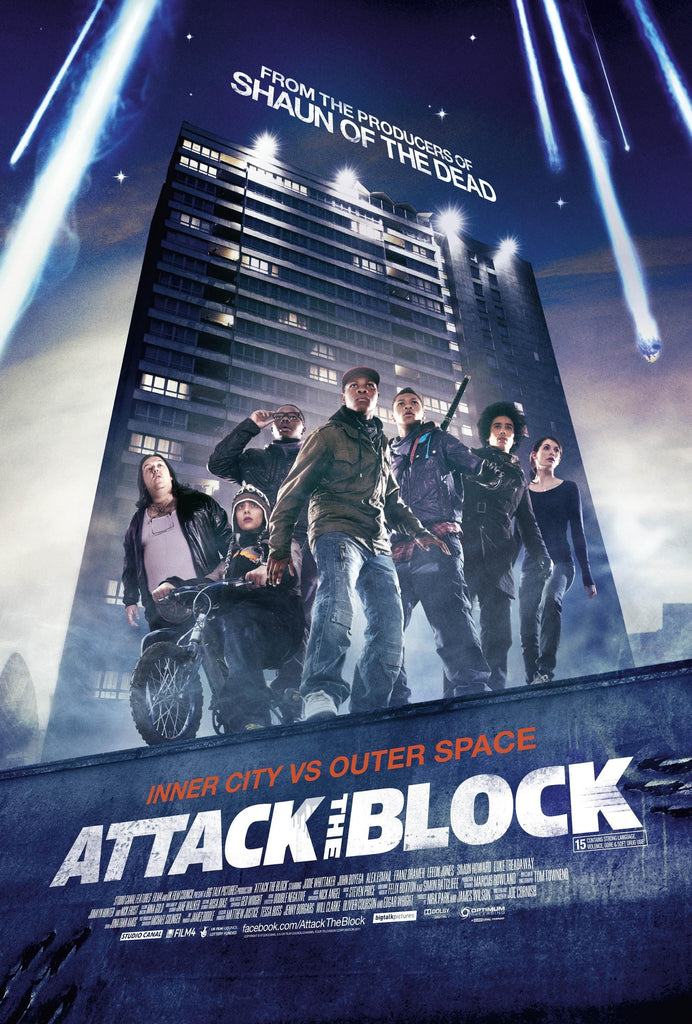
Skilfully blending horror, thrills, and laughs, first time director Joe Cornish did a great job tackling the media hysteria about the hoodie threat at the time. The fear of ASBO kids wearing hooded sweaters was so great at the time that it gave rise to its own movie subgenre, “Hoodie horror.”
Cornish wasn’t content to simply demonise or stereotype his subjects and spent a lot of time with disadvantaged teens on London estates in preparation, enabling him to get an insight into factors behind their behaviour. It also helped him nail the use of Multicultural London English in his screenplay, which plays such a big part in the film’s authenticity.
The blend of kitchen-sink social observation and alien terror worked a treat, and the Cornetto connection was completed by Nick Frost in a small role as a local weed dealer.
Happy and Glorious & Skyfall (2012)
It seems like a very long time ago now that Britain opened its arms to the world to host the 2012 Olympics. The spectacular opening ceremony was one of the highlights, a quirky affair directed by Danny Boyle that blended the usual pomp and pyrotechnics with Austin Powers-style kitsch. Two of the highlights were directly related to British cinema; firstly, Rowan Atkinson played a Bean-esque musician daydreaming about beating the lads from Chariots of Fire in their famous beach run, before Queen Elizabeth II brought the house down with her spectacular arrival in the Olympic Stadium.

Also directed by Boyle, Happy and Glorious featured the elderly monarch in her screen debut, acquitting herself quite nicely as James Bond (Daniel Craig) escorts her on a helicopter ride to the stadium.
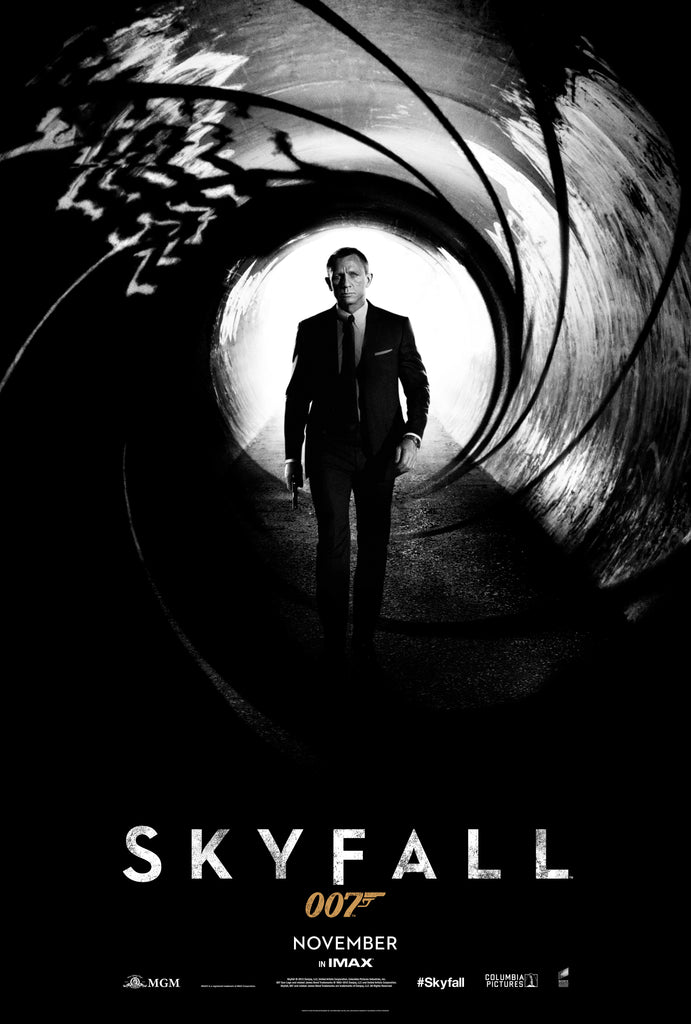
Bond’s cameo at the successful Olympic games served as a unique trailer for Skyfall, released a few months later. Four years had passed since the misfire of Quantum of Solace and the latest movie went back to basics, celebrating all that was good about the franchise. London had always been a location in the Bond movies in the past, but here it was front and centre as the plot involved a nefarious scheme to take down MI6 on their home turf.
Paddington (2014) and Paddington 2 (2017)
Ten years after the Olympics, the Queen shared the screen (along with tea and marmalade sandwiches) with another beloved British icon for her diamond jubilee celebrations: Paddington Bear.
Paddington had appeared on screen several times since Michael Bond’s book was first published in 1958, not least in the wonderful animated ‘70s version voiced by Michael Hordern. He finally got his first big screen outing in 2014 with Paddington, which came from an unlikely source: Writer and director Paul King originally made his name with two cult TV shows, Garth Marenghi’s Darkplace and The Mighty Boosh. He was an inspired choice to helm a family movie that might have been in danger of becoming too twee, with his off kilter sense of humour countering some of the more saccharine moments.
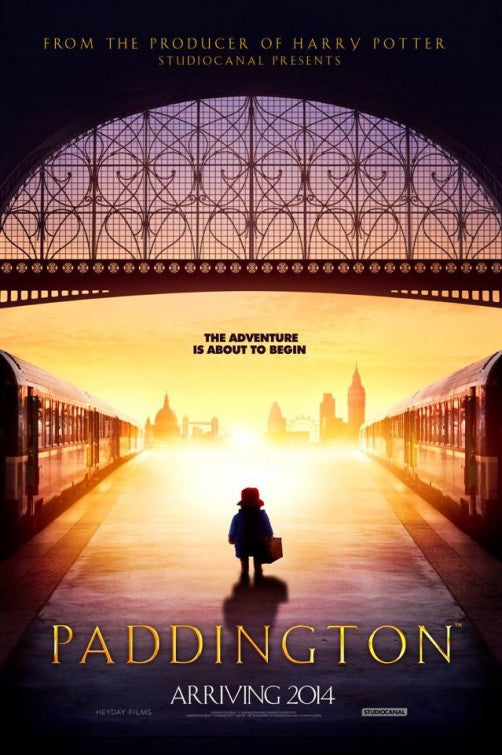
A terrific cast brought the tale to life, with Ben Whishaw perfect as the voice of Paddington and Hugh Bonneville and Sally Hawkins absolutely charming as Mr and Mrs Brown. The supporting cast was packed with familiar British stalwarts including Julie Walters, Peter Capaldi, Jim Broadbent, and Imelda Staunton, and Michael Bond even got a cameo. Bad guy duties were ably fulfilled by a villainous Nicole Kidman, but even she paled in comparison to what was to come in the sequel.
After Paddington became an instant classic, Paddington 2 offered more of the same. But it did have one thing over the original - Hugh Grant hamming it up as Simon Phoenix, a preening has-been thespian who frames Paddington for the theft of a magic pop-up book. It is my favourite Hugh Grant performance and it’s a shame that the Oscars overlooked it.
One might argue that the Paddington movies are a very middle-class vision of London, but it is a celebration of a multicultural city that was welcoming and tolerant of others. That theme became especially pertinent in the sequel after Brexit, with Capaldi’s jobsworth curtain-twitcher representing everything that was so mean-spirited about Britain’s decision to leave the EU. In that respect, Paddington 2 is a stealth anti-Brexit movie, promoting acceptance of anyone no matter where they come from… even little bears from the rainforests of South America.
Rye Lane (2023)
Raine Allen-Miller gave the moribund British romantic comedy a new lease of life with Rye Lane, a vivacious walk-and-talk that simultaneously resembled a more earthy version of Richard Linklater’s Before Sunrise while thumbing its nose at the middle-class pretensions of Richard Curtis’s London-bound rom-coms. It also acknowledged something that a lot of mainstream films set in the capital seem to forget - a lot of non-white people live in London and their lives are rich and interesting too.
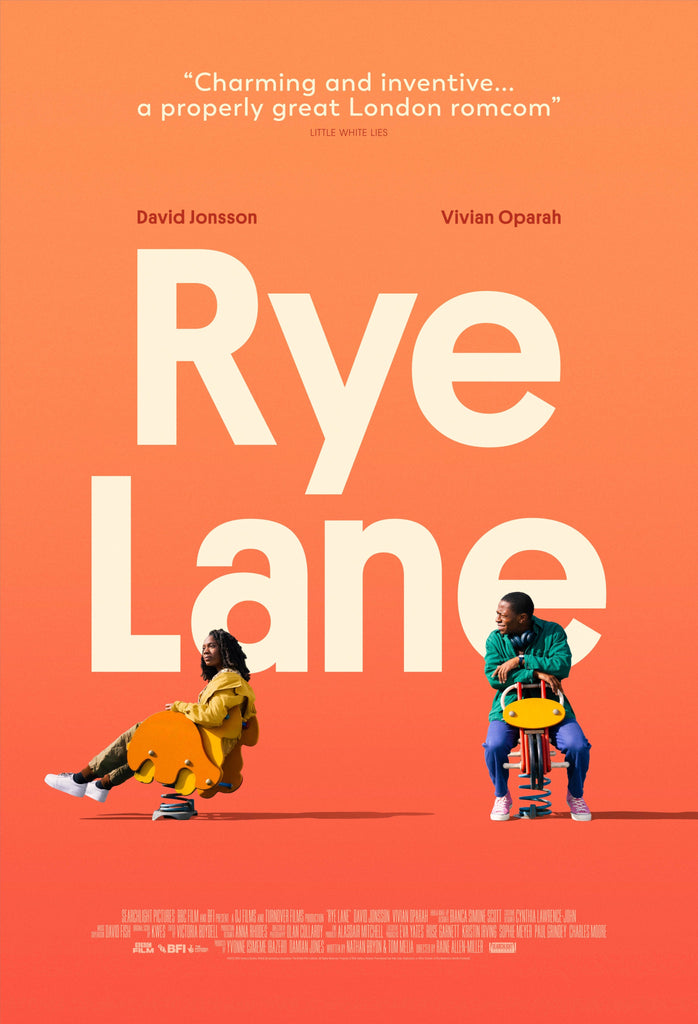
Up-and-comers David Jonsson and Vivian Oparah are utterly disarming as the young couple who meet-cute at a South London art exhibition and gradually fall for each other as they wander the streets around Rye Lane Market. The writing is sharp and the performances so natural that we instantly fall into step with them as they embark on a series of misadventures that threaten to derail their budding romance before it even begins. It all turns out alright in the end for a crowd-pleasing finale to one of the freshest British comedies for a long while, and one that celebrates the vibrancy and multiculturalism of Peckham and Brixton.
So there you have it, some of the most memorable films ever set in London. What are your picks? Let us know!


